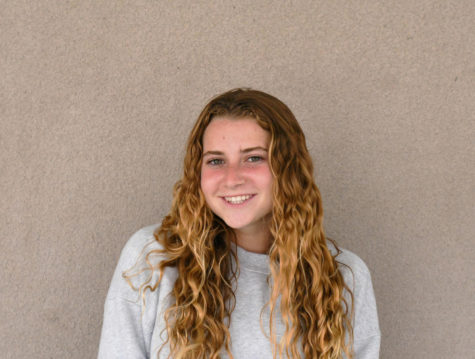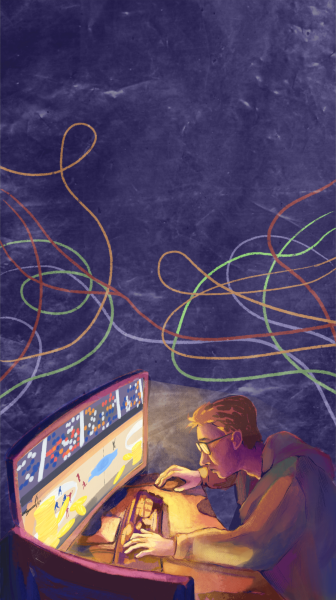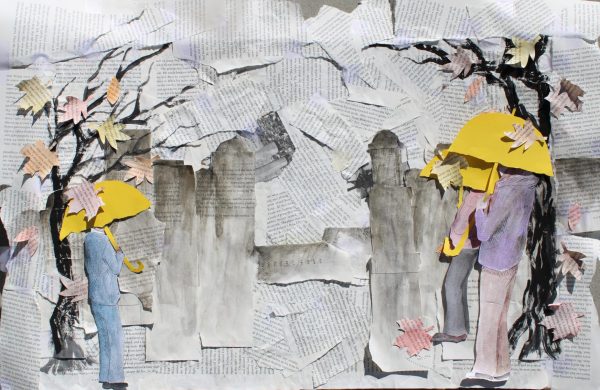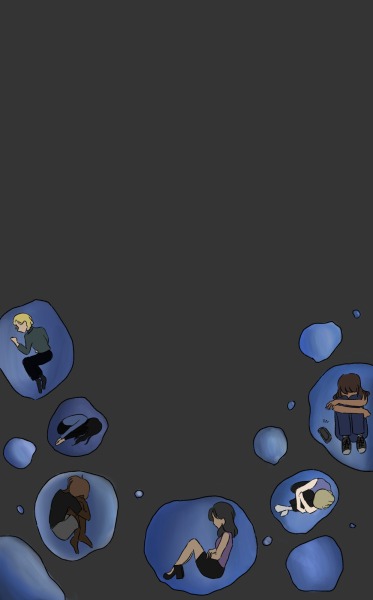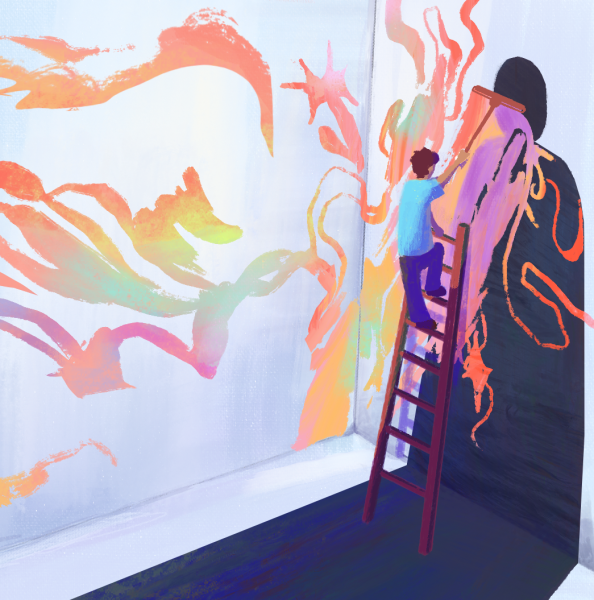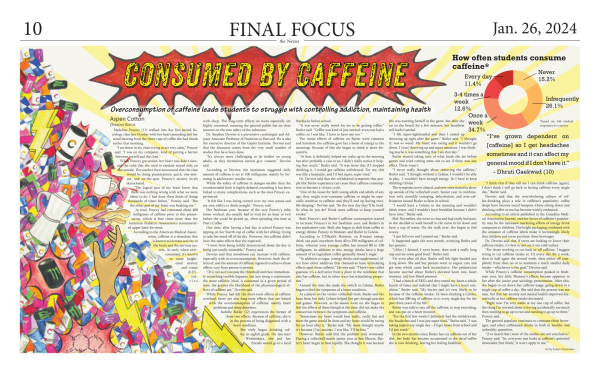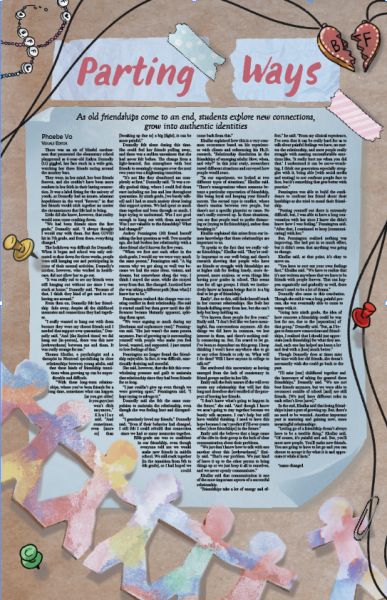Shining a light on learning disabilities
After being diagnosed in high-school, students improve self-perception and adjust academically.
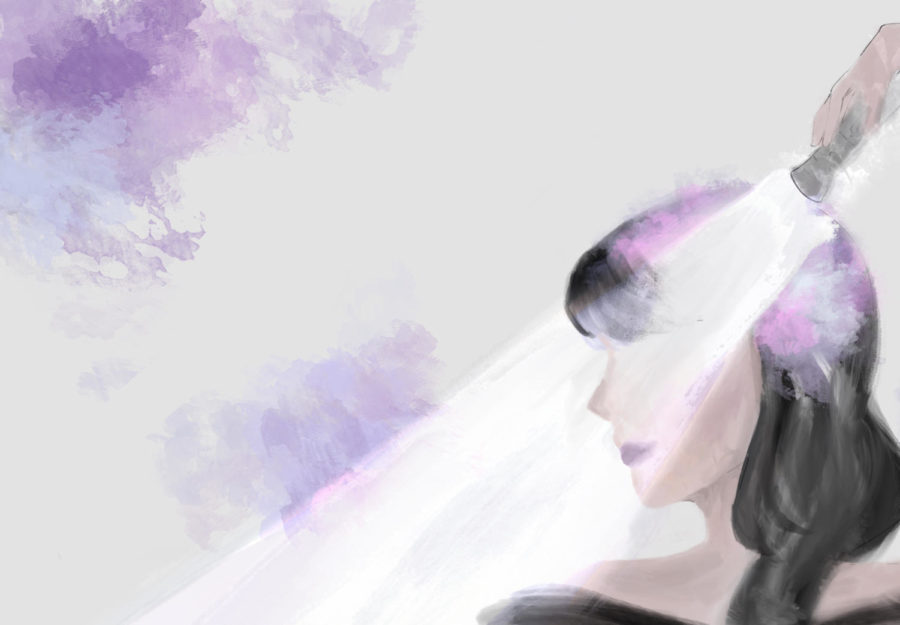
Maddy Sullivan (’19) was 13 when she pulled her first all-nighter. Assignments that her peers could complete in a few hours would take her from the moment she arrived home after school until the early hours of the next morning. Often, she would wake up at the dining room table, her head buried in a set of math problems or a U.S. History textbook.
Though it wasn’t until middle school when Sullivan felt that she truly began struggling in school, there had long been signs that she learned differently. As a result of her inability to finish standardized tests in the time allotted in elementary school, she would spend days working through MAPS and STAR problems during free time in class, often missing opportunities to play with classmates or seek help from teachers.
School didn’t come easily to Sullivan, but she maintained high grades, which hid the warning signs that there was an underlying root to these symptoms.
“I would always get good grades,” Sullivan said. “But I always felt like there was something wrong. And at first, I was told, ‘You’re just a slow worker,’ but once I got into high school, it got even worse.”
It wasn’t until her freshman year of high school that she was advised to get a neuropsychological evaluation to test for a learning disability. The evaluation took place over the span of nine consecutive hours, where she took tests, completed puzzles, and verbally communicated with the examiner.
The results of the evaluation were inconclusive.
Sullivan was left without an answer to the questions that had nagged her for years: questions about the inner-workings of her brain. For one and a half more years—half of her high-school career—she remained in the dark. Due to continued difficulties in school, Sullivan’s evaluation was re-examined towards the end of her junior year of high school. As a result of the re-examination, a lesser-known learning disability called Non-Verbal Learning Disorder (NVLD) was identified. NVLD affects a wide variety of areas, notably spatial awareness, motor coordination, executive functioning, mathematical skills, and the ability to understand social cues and body language.
According to Sullivan, Westview’s intense academic focus and work culture further complicated her feelings about herself. In high school, she struggled to separate her self-worth from Westview’s numerical metrics of success.
“Those first two years when I didn’t know I had a disability, going to a school that’s so academically rigorous and [knowing] deep down that I couldn’t take APs, and that even the regular classes were so challenging, [and being] in an environment that inadvertently made people who didn’t take those kinds of classes or who didn’t go to certain colleges seem inferior was honestly really hard,” Sullivan said. “I think that if I had the word NVLD in my vocabulary, at an earlier time, I wouldn’t hold the residual shame and harsh feelings toward myself that I still do feel from going 17 years feeling different and never knowing why.”
Dr. David Scanlon is an associate professor at Boston College in the Teaching, Curriculum, and Society Department who specializes in cognitive-strategic teaching & learning, content-area literacy, and self-advocacy. According to him, receiving a diagnosis can be validating for individuals who have been living with a learning disability.
“One positive effect for adolescents and adults is that a diagnosis finally makes clear to them who they are and what is going on in their way of interacting with the world,” Scanlon said. “They often find it a relief to finally have an understanding.”
Once Sullivan had the words to describe her disability, her outlook on herself and her abilities changed.
“Receiving the diagnosis was a really liberating experience for me,” Sullivan said. “Before, I just thought [that] maybe [I wasn’t] trying hard enough, or that maybe I’m not smart, but now I had a label on it, which for me, was great, because I always had [NVLD], just now I had the vocabulary. [Once] I knew about what it was, I knew there were other people who struggled with the same thing.”
According to Sunny Jerome, a Learning Strategies teacher at Westview, there is a lengthy process to receive a learning disability diagnosis through the school.
“It is a long process,” Jerome said. “A person would go to their counselor and talk to them. They would look at your grades and your history. We have a group called RTI (Response To Intervention), and they work with the students and come up with accommodations and strategies that might work for the student. If that doesn’t work, then [we] keep on trying.”
When Sullivan was diagnosed, she was granted an IEP [Individualized Education Program], and accommodations at school.
“Benefits [of accommodations] include being able to receive the [legal] rights & protections [that] persons with disabilities are entitled to,” Scanlon said. “These include special education, related services, and accommodations. Through both the Special Education [law] and Section 504 of the 1973 Rehabilitation Act, a team of educators, the student, and the parent or guardian determine what accommodations are needed. [Those accommodations] then can be provided in school, when taking standardized tests, on the job, and even in prison; they can also be carried with you to college.”
Scanlon emphasized the importance of respecting others’ accommodations.
“It is important for everyone to be aware that accommodations are not ‘cheating,’” Scanlon said. “That would be like saying a wheelchair or a white cane gives someone an unfair advantage.”
Jerome said that a team collaborates to grant accommodations at the school level once a student receives an IEP.
“The IEP team works together to see what support a student needs,” Jerome said. “We do in depth testing, [and] work together with a team which includes the parent and the student—we like to include the students [to promote] self advocacy. So really, it’s just seeing what that student needs [for] support. And accommodations are different from modifications. Modifications are modifying the standard, [and] accommodation is helping the student get to that same level playing field as their Gen Ed peers.”
Due to the nature of Sullivan’s disability, her accommodations were less content based, and more focused around extensions on tests and assignments. Sullivan was also allowed alternative test settings. According to Sullivan, one of her most helpful accommodations was the ability to enroll in a Learning Strategies class.
The Learning Strategies class is a class where students with disabilities can better understand their accommodations, and get specialized help. There are some Learning Strategies classes that focus on specific content areas, like writing or math, while others are more general. An example of what might happen in a Learning Strategies class is a student who focuses on time management might work with their teacher to plan out a weekly agenda. Learning Strategies also prepares students for life post-high school.
“One of my favorite things is that I take the seniors, and we’ll go to a Junior College.” Jerome said. “[There] we learn about [post secondary] Disability Support Services.”
Sullivan’s first experience with the class unintentionally occurred prior to her diagnosis. During her sophomore year, when working on a group project, she went into her partner’s learning strategies class during her fourth period off-roll.
“I remember being in that class [with my partner] and thinking, ‘Wow, I would love to have this experience,’” Sullivan said. “It was a very small class size, so the teacher was able to deal intensely with each student and what they needed. Once I got diagnosed, I was so thrilled to be able to be in that class.”
Claire Caires (12) also received a diagnosis for her learning disability in high school.
“I noticed that I was falling really behind in class,” Caires said. “And especially at Westview, such a fast-paced school, I [wondered], “Why does everyone have 4.0’s, and I don’t?”
Caires was diagnosed with ADHD part way through her freshman year.
“ADHD [symptoms] in girls aren’t as obvious, [but] even in kindergarten, I was the last kid to [learn how to] tie my shoe,” Caires said. “I always noticed that I was behind other kids, and I was really talkative. My teachers just put me in the hall and separated me. They didn’t tell me that maybe something was different.”
According to Scanlon, females are often disproportionately underdiagnosed for learning disabilities.
“There is ample evidence that males are more likely to be diagnosed with disabilities, and that for many disabilities, males truly are disproportionately likely to actually have them,” Scanlon said. “However, in the [case of] ADHD, clinical studies indicate there is no meaningful difference between the likelihood of males versus females having the disability.”
At first, Caires didn’t know how to feel about her diagnosis. If anything, it negatively affected her, as she still felt lesser than her peers. She began going to therapy to talk about how this new understanding of herself was affecting her. What ultimately helped Caires accept her disability was reaching out to others in the same position.
“I [realized that] there’s other people out there,” Caires said. “I reached out to other people, because ADHD is really common, so I could learn how [others] cope and how they accommodate themselves.”
One resource that has helped Caires, both pre-and post-diagnosis, has been AVID. AVID is a program, open to all, that aids students towards academic success. A primary focus of AVID is promoting college readiness. In AVID, Caires connects with other students and teachers on a closer level, and prepares herself to achieve her goal of attending a four-year university next year.
“[In AVID], everyone’s been with each other since probably seventh or eighth grade,” Caires said. “We’re all like a family. Everyone’s super close, and they don’t judge. If I don’t understand something, they’ll help me through it. In tutorial, I can sit with a group of people from my math class, and go over the material. It helps me be organized and make sure I know what I’m doing.”
Though Caires is now receiving the medication and school accommodations in order for her to be successful in an academic setting, she said she feels as though she missed out on valuable time by virtue of her late diagnosis.
“I wish I got [diagnosed] a lot sooner, so I could set up better studying habits,” Caires said. “Because now I have them, but even in my sophomore and early junior year, they weren’t really [developed].”
Even now, Sullivan carries the weight of her later diagnosis. As an Early Childhood Development major at San Diego State University, Sullivan considers the early identification of learning disabilities to be crucial in educational settings.
“I’m pretty passionate about early intervention,” Sullivan said. “I don’t have any spite towards my former educators, or my parents who didn’t pick up on my disability, because [NVLD] is not as well known as something like ADHD or dyslexia, and it’s also something that can easily fly under the radar. But, I also do recognize that a lot of the ways that I view myself and the ways that I approach things might have been different if I had gotten to have accommodations earlier in life.”
Part of what compelled Sullivan to work in education was her own unique educational experience, and according to her, her disability affects her outlook on working with students.
“Having experienced a disability, it makes me more aware of it, and more passionate about it, because I know what it can do,” Sullivan said. “And not only do I know how disability can impact [a person], but I know how much accommodation can [positively] impact someone with a disability, especially at [the] early age I’m working with.”
Within education, Sullivan said that the normalization of conversations about learning disabilities within the past few years has removed some of the stigma that surrounds the topic. According to Sullivan, she hopes to continue this trend as a teacher, beginning inclusive conversations about learning differences from a young age to set a foundation of acceptance amongst her students.
“Telling people that it’s okay [to go to community college or to be different is important]—you might think that it’s just lip service, but it could really help someone like me feel seen and feel like they’re a part of the school when it can be really easy when you’re in that situation to feel like you’re othered,” Sullivan said.
According to Scanlon, awareness of certain disabilities that impact learning has increased.
“There is less stigma related to many disabilities now,” Scanlon said. “[The younger generation] is very open to the range of human difference and to being open and honest when struggling or challenged, so that helps [them] come forward to seek out [support].
Scanlon said that self-awareness plays a key role in allowing a person with a learning disability to thrive.
“At any age, the person receiving the diagnosis must have a self-awareness to help them understand themselves in relation to the diagnosis,” Scanlon said. “That means they can think about what their individual characteristics are and how they are impacted by their disability. This is [an] alternative to assuming they ‘are’ whatever they happen to know about that disability.”
For both Caires and Sullivan, accepting their disabilities and re-defining their outlooks on themselves and on learning as a whole has helped them navigate through their educational and personal journeys. But for both, this process looked different.
According to Caires, ADHD plays an important role in her identity.
“[ADHD] is definitely a part of me because [I feel] it makes me really social,” Caires said. “My parents have always told me that I ask really deep questions, and that I’m very emotionally intelligent. I can definitely tell what other people are thinking.”
For Sullivan, acceptance of her disability came in the form of re-defining success—moving away from the strict academic focus of the Westview community.
“I’ve tried to move away from numerical values of success,” Sullivan said. “There’s this quote by Maya Angelou that I’ve always really liked, which is ‘success is liking yourself, liking what you do, and liking how you do it,’ and I feel really strongly about that.”
